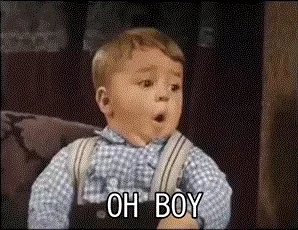Started to prevent a total derail in my CYYZ Aviation Photos thread - this will start off with myself and @Derbysieger talking about Canon lenses and whatever tangents that may bring. Feel free to chime in, ask about or otherwise discuss other brands of kit such as Sony & Nikon as well!
To get right to it, @Derbysieger - I have my lens wish list but wonder what your thoughts are.
I’ll throw my kit in a details-tag dropdown for reference. Sticking to mirrorless RF lens discussion for the moment…
Wes' Camera Kit
- Canon EOS R10 Camera - Bought as a kit.
- RF-S18-45mm F4.5-6.3 IS STM - Kit Lens
- RF50mm F1.8 STM - Prime Lens
- RF100-400mm F5.6-8 IS USM
I marked the lenses I own in the lineup below as well, with bold.
Full Canon RF Lens Lineup + CAD Pricing
| Lens Model | Price (CADS) |
|---|---|
| RF 50mm f/1.8 STM | $269.99 |
| RF-S 18-45MM F4.5-6.3 | $399.99 |
| RF 16mm F2.8 STM | $409.99 |
| RF 24-105mm f/4-7.1 IS STM | $549.99 |
| RF 35mm f/1.8 Macro IS STM | $649.99 |
| RF-S 18-150MM F3.5-6.3 | $649.99 |
| RF 15-30mm F4.5-6.3 IS STM | $729.99 |
| RF 24mm F1.8 Macro IS STM | $799.99 |
| RF 85mm f/2.0 IS STM Macro | $849.99 |
| RF 100-400mm F5.6-8 IS USM | $879.99 |
| RF 600mm F11 IS STM | $1,099.99 |
| RF 24-240mm f/4-6.3 IS USM | $1,199.99 |
| RF 800mm f/11 IS STM | $1,399.99 |
| RF 24-105mm f/4 L IS USM | $1,749.99 |
| RF 100mm f/2.8 L Macro IS USM | $1,849.99 |
| RF 14-35mm F4 L IS Usm | $2,249.99 |
| RF 70-200mm f/4 L IS USM | $2,399.99 |
| RF 5.2mm F2.8L Dual Fisheye VR | $2,699.99 |
| RF 135mm f1.8 L IS USM | $2,849.99 |
| RF 50mm f/1.2 L USM | $2,999.99 |
| RF 15-35mm f/2.8 L IS | $2,999.99 |
| RF 24-70mm f/2.8 L IS | $2,999.99 |
| RF 85mm f/1.2 L USM | $3,499.99 |
| RF 70-200mm f/2.8L IS USM | $3,499.99 |
| RF 100-500 f/4.5-7.1 L IS USM | $3,849.99 |
| RF 28-70mm f/2.0 L USM | $3,899.99 |
| RF 85mm f/1.2L USM DS | $3,999.99 |
| RF 400mm F2.8 L IS USM | $15,899.99 |
| RF 600mm f/4.0 L IS USM | $17,199.99 |
| RF 800mm 5.6L IS USM | $22,099.99 |
| RF 1200MM 8.0L IS USM | $25,999.99 |
Right now, my focal length coverage is 18-45 / 50 / 100-400. So, there is a gap to be filled essentially from 46-100mm. I could do that relatively cheaply with the RF-S 18-150mm F3.5-6.3 IS STM. In the USA, you can buy the R10 as a kit with that lens instead of the 18-45, which I would have - but that kit does not come to Canada. I don’t really want to grab it now despite the cheap solution simply because I greatly see the benefit of faster lenses now with the 50 prime, and since that is another RF-S lens, it is APSC only - and I like the idea of sticking to RF full-frame lenses so I can add an FF body to my kit down the road and carry as many lenses forward as possible.
So that leaves me leaning towards perhaps the cheaper 24-105, but for not a mountain more I could do the 24-240 which is also a bit faster of a lens, and potentially have a “universal” lens for many use cases. I don’t feel too strongly towards the 24-105 F/4 model, as it is getting up in price and if I am aiming faster and shorter in focal length, I’d rather save towards the 24-70 f/2.8 lens. With that though, I’d still have a gap from 70-100.
The 24-70 also would be a good way to replace the 18-45 when it comes to moving into a full-frame body, and makes an excellent portrait taking lens from what I understand.










